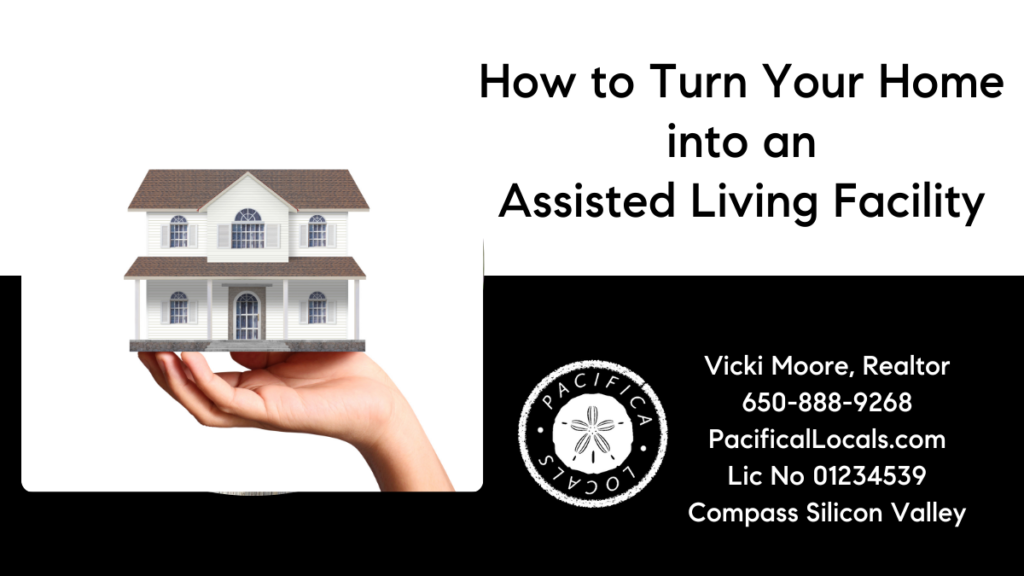Assisted living facilities are trending. As a realtor, I’ve seen a growing number of homeowners and buyers looking into transforming their homes. With an aging population and the desire for more personalized care, this option is becoming increasingly appealing.
In this article, I’ll talk you through the steps to turn your house into an assisted living facility; from the legal and financial considerations to the practical renovations required.
First Steps:
Understanding the Assisted Living Facility Landscape
Assisted living facilities provide a middle ground between independent living and nursing homes. They offer residents a combination of housing, personal care, and healthcare services. These facilities cater to older adults who need help with daily activities, such as bathing, dressing, or medication management, but don’t require the intensive medical care provided in a nursing home.
Turning your home into an assisted living facility can be a rewarding and lucrative endeavor, but it’s essential to understand the legal and regulatory requirements in your area.
Each state has its own set of laws and licensing procedures, so it’s crucial to research the specific guidelines and obtain the necessary permits and approvals before embarking on this journey.
Understand the Regulatory Landscape for Assisted Living Facilities:
When considering turning your home into an assisted living facility, it’s crucial to thoroughly understand the regulatory landscape in your local area.
Here are some key steps to navigate the process:
Research Zoning Laws and Licensing Requirements for Assisted Living Facilities
The first step is to research the zoning laws and licensing requirements in your state and local jurisdiction.
Assisted living facilities are heavily regulated, and you’ll need to ensure your property is zoned for commercial or residential-commercial use.
Contact your state’s regulatory agencies, such as the Department of Health or Department of Social Services, to learn about the specific licenses and permits required to operate an assisted living facility. This may include obtaining a residential care facility for the elderly (RCFE) license or a similar designation.
Comply with Building Codes and Safety Standards
In addition to zoning and licensing, you’ll need to ensure your home meets all applicable building codes and safety standards for an assisted living facility. This may involve making renovations to improve accessibility, install emergency systems, and enhance overall safety for residents.
Work closely with local building and fire inspectors to understand the requirements and obtain the necessary approvals before beginning any renovations.
Consult with Regulatory Agencies
Throughout the process, it’s highly recommended to consult with your state’s regulatory agencies that oversee assisted living facilities. These agencies can provide guidance on navigating the complex web of laws, regulations, and best practices.
They can help you understand the specific requirements in your area, such as staffing ratios, training standards, and resident rights.
Maintaining open communication with these agencies can help ensure you comply with all regulations and avoid potential issues down the line.
By thoroughly understanding the regulatory landscape, you can take the necessary steps to legally and successfully transform your home into an assisted living facility that provides a safe, comfortable, and enriching environment for your residents.
Assessing Your Home’s Suitability
Bill Gassett of
Maximum Real Estate Exposure provided some useful guidance on some of the possible considerations for making improvements to your home to accommodate older adults in declining health.
“One of the first things you should do is improve the access to enter and leave the home. A few of my clients have needed to do this over the years. You’ll want to install ramps for steps and, if possible, widen interior doorways for wheelchair access. If the home has multiple floors consider adding a chair lift.
Other helpful things to do include putting in grab bars in the bathrooms near tubs and toilets. A walk-in shower can also be very helpful.
Remove tripping hazards like throw rugs, and secure rugs or runners to prevent slips and falls. For all improvements it is wise to research;financial aid programs for home repairs and safety updates. State housing finance agencies, community development groups, and federal programs may offer assistance.”
Here are additional points to consider when determining if your home is a good candidate for an assisted living facility:
Size and Layout:
The home should have enough space to accommodate multiple residents, as well as common areas for socializing and activities.
Ensure that the floor plan is accessible and easy to navigate for individuals with mobility challenges.
Accessibility:
Evaluate the home’s accessibility features, such as wide doorways, ramps, and grab bars. Identify areas that may require modifications to meet the needs of residents with physical disabilities.
Safety and Security:
Assess the home’s
safety features, including fire alarms, emergency exits, and security systems.
Ensure that the property can be easily monitored and that residents can move around safely.
Outdoor Space:
Consider the availability of outdoor spaces, such as gardens or patios, which can provide residents with a sense of independence and improve their overall well-being.
Navigating the Legal and Financial Considerations
Turning your home into an assisted living facility involves a complex web of legal and financial requirements.
Here are some key steps to consider:
Zoning and Licensing:
Research the zoning laws in your area to ensure that your property is zoned for commercial or residential-commercial use. Obtain information regarding the necessary licenses and permits from local authorities to operate an assisted living facility.
Financing:
Explore financing options, such as small business loans, commercial mortgages, or investor funding, to cover the costs of renovations, staffing, and ongoing operations.
Insurance:
Secure appropriate insurance coverage costs, including liability, property, and workers’ compensation policies, to protect your business and residents.
Staffing:
Develop a plan for hiring and training qualified staff, such as caregivers, nurses, and administrative personnel, to provide the necessary level of care and support.
Resident Agreements:
Establish clear resident agreements that outline the services provided, the costs, and the rights and responsibilities of both the facility and the residents.
Designing for Comfort and Care
Transforming your home into an assisted living facility requires careful planning and design to ensure the comfort and safety of your residents.
Consider the following renovations and modifications:
Accessibility:
Widen doorways, install ramps, and add grab bars in bathrooms to make the home more accessible for residents with mobility challenges.
Common Areas:
Create inviting common areas, such as a living room, dining room, and activity spaces, where residents can socialize, dine, and participate in recreational activities.
Private Suites:
Design private suites or apartments that offer residents a sense of independence and privacy, while still providing the necessary care and support.
Safety Features:
Incorporate safety features, such as emergency call systems, non-slip flooring, and fire suppression systems, to ensure the well-being of your residents.
Outdoor Spaces:
Develop outdoor areas, such as gardens or patios, that allow residents to enjoy fresh air and engage in light physical activity.
Technology Integration:
Explore the use of assistive technologies, such as medication management systems or remote monitoring, to enhance the care and support provided to residents.
Conclusion
You can successfully transform your home into an assisted living facility that provides a comfortable, safe, and enriching environment for your residents. Remember, this is a significant undertaking, but with the right planning, execution, and dedication, it can be a rewarding and profitable venture.

